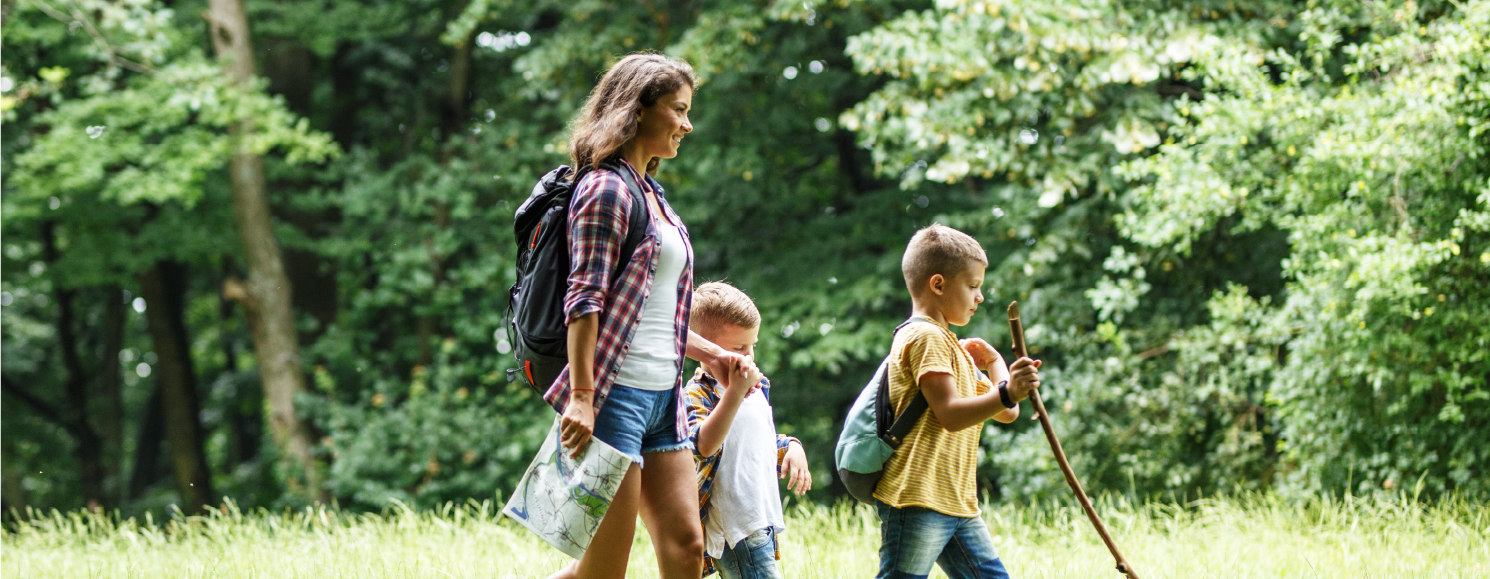Life Insurance
Lump sum payment if you were to pass away or are diagnosed with a terminal illness.
AIA Vitality NZ - 5 min read
01 December 2021
When we talk about the climate crisis, it’s impossible to ignore the role that our children will play in confronting the challenges of the future. About 26 per cent of the world’s population are age 15 or younger.

The impacts of over 250 years of burning fossil fuels and clearing land are starting to manifest themselves. There’s a lot of lag time associated with these actions, and our children – the ones who will become key decision makers and policymakers, the scientists and farmers – will have to inherit this. It’s a concerning topic, but it’s a discussion that needs to be had.
Here are some ways we can ease the subject into the conversation.
In my formative years growing up in Malaysia, my parents would let me roam during my free time. It turned me into someone who loved discovering the world, as well as developing my resilience, ability to problem solve, and physical fitness. That inquisitive nature remains with me through adulthood, and we’ve tried to nurture that same spirit in our kids, who are 10 and 12.
We have camping holidays, weekend bushwalks and activities that generally take place in nature. Sometimes the kids complain when they have to pull weeds on the farm as part of The Forktree Project, but when you hear them talking positively to their friends about it, you realise that simply having that exposure to nature is a great influence on them.
Sadly, it’s not difficult to find opportunities to talk with your kids about the impact of climate change on New Zealand, Australia and around the world.
In 2009, Australia had the Black Saturday fires, followed by the terrible flooding in Brisbane in 2011. There was also the superstorm in South Australia in 2017 where all the power went out for two days. More recently, there was the devastating impact of the 2020 Black Summer fires. Even on the news now – there’s stories on climate change and extreme weather events all the time. If you want to have the conversation with your kids, use an example of something that crops up day to day that lets you broach the topic.
One of the earliest signs of my kids showing an interest in environmental issues was on a trip across Western Australia. We passed road trains carrying lambs, and my then six-year-old said, “Dad, where are the lambs going?” I told him probably to be eaten, and he replied, “Well, I’m never eating them.” These little moments open the door to discussions that can broaden their understanding of nature – which will persist into their teens and adulthood.
In some ways, I don’t think discussing climate change with your kids is that different than with adults. You want to instil a sense of urgency in them, change their behaviour and get them to be part of the solution. At the same time, you don’t want to scare them.
When adults fear something, they often pretend it’s not there. Most will do the same thing and continue their lives as normal, justifying their inaction by deciding their role is too small to be significant and hoping somebody else will sort it all out.
The way to navigate this is by coming up with solutions. It’s easy to note that a problem exists, but then you must match it with an answer. For example, taking the school bus, cycling or walking to school, or eating less meat than other families – things like that are easy to bring up with your children. And as they get older, they’ll start to understand the numbers and the connection between the scale of what we’re facing and our behaviour.
Being a role model is also important when broaching the topic of climate change (and anything else, really). You can’t impose behaviours on others you don’t match yourself. If I’m leading an expedition, I can’t send off the men and women I’m with to do all the dangerous stuff. I have to fall in just the same as them – otherwise, you lose respect very quickly. I see parenting as the same.
If your child is scared about melting ice, rising sea levels and increasing temperatures, you can use this as moment of empowerment. Show them the things you’re doing – growing native plants in the garden, using less electricity and having shorter showers. While the scale of the challenges we’re facing is vast, it’s reassuring to show your children that we are taking action.
That being said, don’t go too extreme – you need to find a balance that works for your family. If you frame caring for the environment as something that steals away your children’s fun, inevitably they’re going to resent it.
It’s never too early to speak with your children about climate change – and it’s a lot easier than you might think. Get creative, approach the topic in a positive light and be proactive with solutions you can implement as a family.
AIA Vitality NZ are proud to be working with Trees That Count, a conservation charity which has been championing native tree planting for over 20 years. They work with businesses, communities and everyday Kiwis with a vision to help plant 200 million native trees across our country which will restore native bush, waterways and help combat climate change.
Article by: Tim Jarvis
AIA Vitality Ambassador Tim Jarvis is a world-renowned polar explorer, expedition leader and environmental scientist. With a focus on sustainability, Tim has more than 25 years’ worth of experience in his respective fields, and a wealth of knowledge when it comes to helping teams and individuals perform at their highest level. He also leads The Forktree Project, a registered charity that aims to return a 133–acre former pastoral property in South Australia to a natural state.